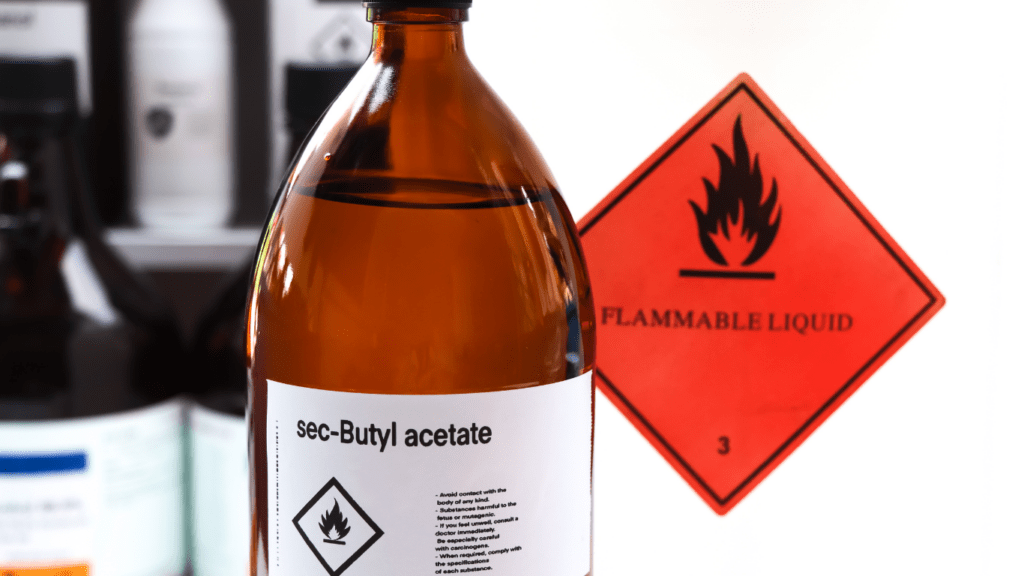Understanding Exposure to Harmful Chemicals
Exposure to harmful chemicals occurs frequently, often without our awareness. Knowing where these chemicals come from and how they impact health is crucial for minimizing risk.
Common Sources of Harmful Chemicals
Everyday products often contain harmful chemicals. Cleaning supplies, for example, possess toxic compounds such as ammonia and bleach. Personal care items like shampoos and lotions may include parabens and phthalates.
Food packaging sometimes leaches chemicals like bisphenol A (BPA) into consumables. Household dust accumulates flame retardants from furniture and electronics.
- Cleaning Supplies: Ammonia, Bleach
- Personal Care Items: Parabens, Phthalates
- Food Packaging: Bisphenol A (BPA)
- Household Dust: Flame Retardants
Effects of Chemical Exposure on Health
Harmful chemicals can affect health in various ways. Exposure to toxic substances can lead to acute symptoms like headaches, dizziness, and skin irritation. Longer-term consequences include respiratory issues, hormone disruption, and an increased risk of cancer.
According to the Environmental Working Group (EWG), consistent exposure to certain chemicals has been linked to developmental delays in children and reproductive harm in adults.
Understanding these potential health impacts helps in taking proactive steps to reduce exposure and safeguard well-being.
Strategies to Reduce Chemical Exposure in the Home

Reducing exposure to harmful chemicals in everyday life can protect health and well-being. Simple changes can make a significant difference in the home environment.
Choosing Safer Cleaning Products
Switching to safer cleaning products lowers exposure to harmful chemicals. Many conventional cleaning products contain ammonia, bleach, and phthalates. I opt for products labeled as non-toxic, biodegradable, or with plant-based ingredients.
Brands like Seventh Generation, Method, and Ecover offer such alternatives. DIY cleaning solutions also work well. Mixing vinegar and baking soda creates an effective all-purpose cleaner.
Implementing Natural Pest Control
Using natural pest control methods avoids harmful pesticides. Chemical pesticides often contain neurotoxins and endocrine disruptors. Instead, I use natural methods.
Diatomaceous earth, for instance, effectively repels insects. Essential oils like peppermint, eucalyptus, and lavender deter pests without risking health. Sticky traps and sealing entry points also keep pests at bay without chemicals.
Reducing Chemical Intake Through Diet
Reducing exposure to harmful chemicals starts with what you eat. Choose foods wisely and prepare them correctly to minimize chemical intake.
Buying Organic and Locally-Sourced Foods
Organic foods avoid synthetic pesticides and fertilizers, which cuts down on chemical consumption significantly. Locally-sourced foods reduce the chance of contamination during transport and ensure fresher options.
When buying vegetables, fruits, and dairy, look for USDA Organic labels to ensure compliance with organic standards.
Tips for Washing and Preparing Food
Washing fruits and vegetables thoroughly removes surface pesticides and dirt. Use a mixture of water and baking soda to clean produce effectively. Scrub items with thick skins, like potatoes and carrots.
Peel fruits and vegetables like apples and cucumbers, which can help reduce pesticide residues. Cooking meats to the appropriate temperatures kills harmful bacteria and reduces chemical residues.
Personal Care and Beauty Products
Care and beauty routines often involve many products containing harmful chemicals. By identifying and avoiding these ingredients, you can reduce your exposure and protect your health.
Identifying Harmful Ingredients
Many personal care items, like shampoos and lotions, contain harmful chemicals. Common offenders include parabens, phthalates, and sodium lauryl sulfate (SLS). Parabens, used as preservatives, can mimic estrogen, potentially disrupting hormone function.
Phthalates, found in fragrances, can harm the reproductive system. SLS, a detergent and surfactant, can irritate skin and eyes.
To identify these ingredients, read labels carefully. Look for certifications from credible organizations like the Environmental Working Group (EWG). Apps like Think Dirty and EWG’s Skin Deep database provide information on product safety.
Alternatives to Chemical-Laden Products
To reduce exposure, use products with natural ingredients. Brands like Dr. Bronner’s and Burt’s Bees offer safer alternatives without harmful chemicals. DIY beauty solutions also work well. For example, use coconut oil as a moisturizer or baking soda as toothpaste.
Choose products with minimal ingredients and those labeled as organic or natural. Shampoo bars, natural soaps, and essential oil-based perfumes offer safer choices. These alternatives help maintain a healthy personal care routine without stressing your exposure to harmful chemicals.
Workplace and Environmental Considerations
Exposure to harmful chemicals extends beyond homes to workplaces and the general environment. Addressing these areas aids in minimizing overall chemical exposure.
Improving Indoor Air Quality
Improving indoor air quality decreases exposure to airborne chemicals and allergens.
- Utilize HEPA filters to trap fine particles, which include dust, pollen, and smoke.
- Ensure proper ventilation by regularly opening windows to allow fresh air circulation.
- Employ air purifiers with activated carbon to absorb volatile organic compounds (VOCs) from paints, cleaning products, and synthetic materials.
- Implement houseplants like spider plants or snake plants, which are known for their air-purifying qualities, to enhance indoor air.
- Avoid using aerosol sprays, which release harmful VOCs, instead opting for pump sprays or natural alternatives.
- Regularly vacuum carpets and floors using a vacuum cleaner equipped with a HEPA filter to reduce allergens and chemical residues.
Reducing Occupational Exposure
Many workplaces expose employees to chemicals that pose health risks. Use personal protective equipment (PPE), such as gloves, masks, and goggles, to prevent direct contact and inhalation of harmful substances.
Ensure that the workplace compliance with Occupational Safety and Health Administration (OSHA) guidelines limits exposure levels and mandates safety measures.
Employ adequate ventilation systems, especially in manufacturing and laboratory settings, to disperse airborne chemicals. Install fume hoods and exhaust systems to remove hazardous fumes.
Conduct regular training sessions focused on chemical safety and emergency procedures to keep employees informed and safe.
Choose eco-friendly and low-VOC products for office supplies and cleaning agents to minimize indoor pollution. Store chemicals in well-ventilated, designated areas away from general workspaces.
Implement regular maintenance checks on equipment to prevent leaks and spills.


 is the visionary founder of Eco Elegance Technique, a platform dedicated to blending sustainability with beauty and fashion. With a background in environmental science and fashion design, Lauranne has spent her career pioneering eco-friendly practices in both industries. Her work has influenced a shift towards ethical sourcing, waste reduction, and the use of organic materials. Passionate about education, she frequently speaks at conferences and works to inspire others to embrace a sustainable lifestyle.
is the visionary founder of Eco Elegance Technique, a platform dedicated to blending sustainability with beauty and fashion. With a background in environmental science and fashion design, Lauranne has spent her career pioneering eco-friendly practices in both industries. Her work has influenced a shift towards ethical sourcing, waste reduction, and the use of organic materials. Passionate about education, she frequently speaks at conferences and works to inspire others to embrace a sustainable lifestyle.
